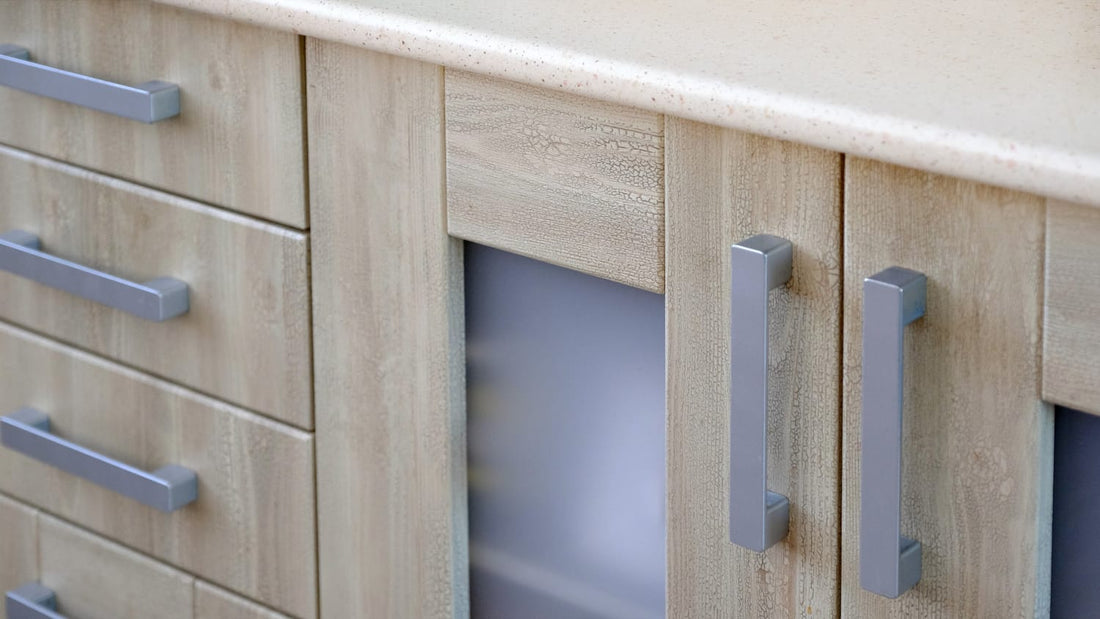
How To Clean Cabinets In 5 Easy Steps
Cabinets provide for Mise en place "everything in its place."
How are your cabinets looking?Individuals are becoming more obsessed with accumulating things, diversifying our options for cooking, wardrobes, tools, toys, etc. Houses used to be built with minimal storage. Now we can't imagine a master bedroom without walk-in-closets. Kitchens are built with floor to ceiling cabinets. All these cubbies and compartments are meant to make our stuff convenient to use, find, and preserve. There are entire stores dedicated to organizing our lives. It turns out that your choice of cabinet design can easily be one of the most substantial investments in your home. So, how do you clean cabinets and keep them looking good for years to come? For the kitchen cabinets, Powerizer has a degreaser and will help remove grease build-up and neutralize food odors. The natural enzymes for cleaning easily break down starches and proteins from spills left behind on surfaces. In the bathroom, makeup drawers and medicine cabinets accumulate sparkles, dyes, oils, and dust reasonably quickly. Powerizer will break down dyes and pigments and grease, so they dissolve and wipe away easily. Let's put it to the test and clean some cabinets.
Here is what you will need:
· One (1) scoop of Powerizer Complete detergent
· One (1) bucket
· One (1) gallon of hot water or less to pour into the bucket
· One (1) microfiber cloth for cleaning
· Hand broom and dustpan for dusting out cabinets and drawers
· One (1) hand scrubber for scrubbing, old toothbrush, damp cloth or a vacuum
· One (1) clean microfiber cloth for rinsing all surfaces clean
How to Clean Cabinets in 5 Easy Steps:
Step 1: Make a concentrated mixture of Powerizer Complete in the bucket with plain hot water. Give it a few minutes to start activating the solution.
Note: Powerizer should dissolve entirely within five (5) to ten (10) minutes.
Step 2: Sweep out all flat cabinet surfaces with the best tool for the job. Depending on the mess, you may choose a hand scrubber, a razor blade, a toothbrush, a damp cloth, or even your vacuum.
Step 3: Wipe the upper and side surfaces using a wet microfiber cleaning cloth. Dip the cloth into the bucket and wring out most of the water, so it doesn't drip everywhere but is still saturated enough to squeeze a little bit of Powerizer from the rag. Use a damp cloth to wipe cabinet shelves and the bottom of drawers to soften residues, scuff away crumbs and dissolve spills from the flat surfaces of the cabinets. We recommend starting at the top of the cabinets and work your way down to the lower cabinet surfaces.
Step 4: Scrub to remove more hardened residue, you may want to scrub using a hand dish scrubber or a scouring pad. For cleaning debris out of corners use an old toothbrush. Use a razor blade for more tough dried-on spills. However, be sure to not remove veneers, paint or stains so only use a sharp object as the last resort and try to keep it in a razor blade holder.
Step 5: Rinse all the cabinet surfaces with plain water to remove residue. Make sure to remove all of the Powerizer solutions from the rag.
Research the material content of your cabinets.
Melamine Cabinets usually have a wood veneer, and the core is made of compressed wood particles which are susceptible to water damages. In this event, we do not want to allow the solution to pool on the surfaces of the drawers or shelf as they could cause bubbling and warping, which will weaken the structural integrity of the cabinet. For this reason, be sure to wipe with a damp cloth, making sure not to allow puddles of the Powerizer solution to sit on the cabinet surface.
Wood Cabinets are usually protected by a wood filler, a decorative stain or paint and finished off with a polyurethane protectant. Over time the seal can peel, crack and flake off. In this instance, a mechanical cleaning might be one option for cleaning these type of wood cabinets. To do this, apply light scuffing to the INTERIOR surfaces using light-grit sandpaper. Dust away particles and wipe them clean. Do not use sandpaper on painted wood unless you are not worried about removing the decorative stains or paints.
Glass Shelving or front door panels have become a popular design feature, especially in the kitchen. Be sure to wipe them clean with Powerizer, then rinse all glass surfaces with plenty of water to remove leftover detergents and streaks. Finally, using a clean damp microfiber cloth, buff and polish away any leftover water and steaks to reveal a squeaky-clean glass.
Stay calm and organize on. Powerizer makes cleaning cabinets easy. Now that you're focusing on Mise en place and have started putting everything back in its place, we hope that you can reflect on how easy it was to remove grease from your cabinets. Lingering cooking odors were neutralized. Spills and splatters were easily dissolved to reveal clean shelves and doors. Residues are rinsed, your surfaces attract less dirt. The loud makeup and toothpaste spills are forgotten like last year's trend. The sparkle in your eye and wide smile brings you joy every time you open your cabinet doors and drawers, giving you a real sense of accomplishment. Finally, you realize it's happening. The start of your clean-freak-O.C.D. addiction just begun. Now you recognize, the cleaning revolution may not be televised, but in your cleaning chronicles, its clear Powerizer does clean everything dirty. Powerizer is the only whole house cleaner you will ever need.
